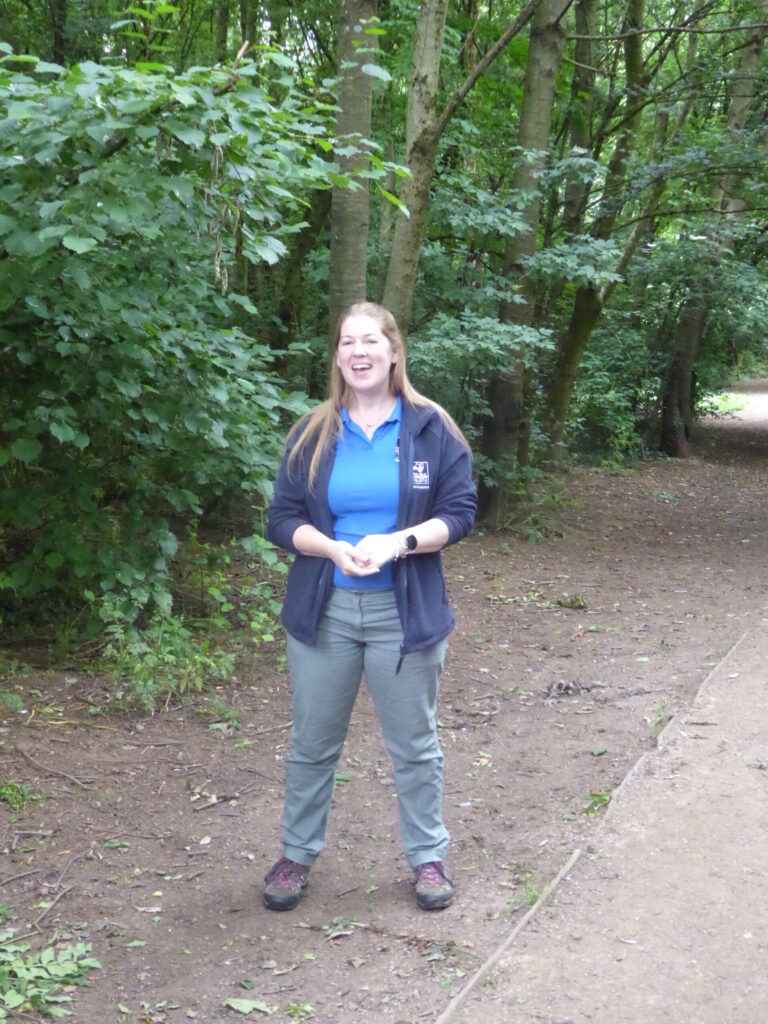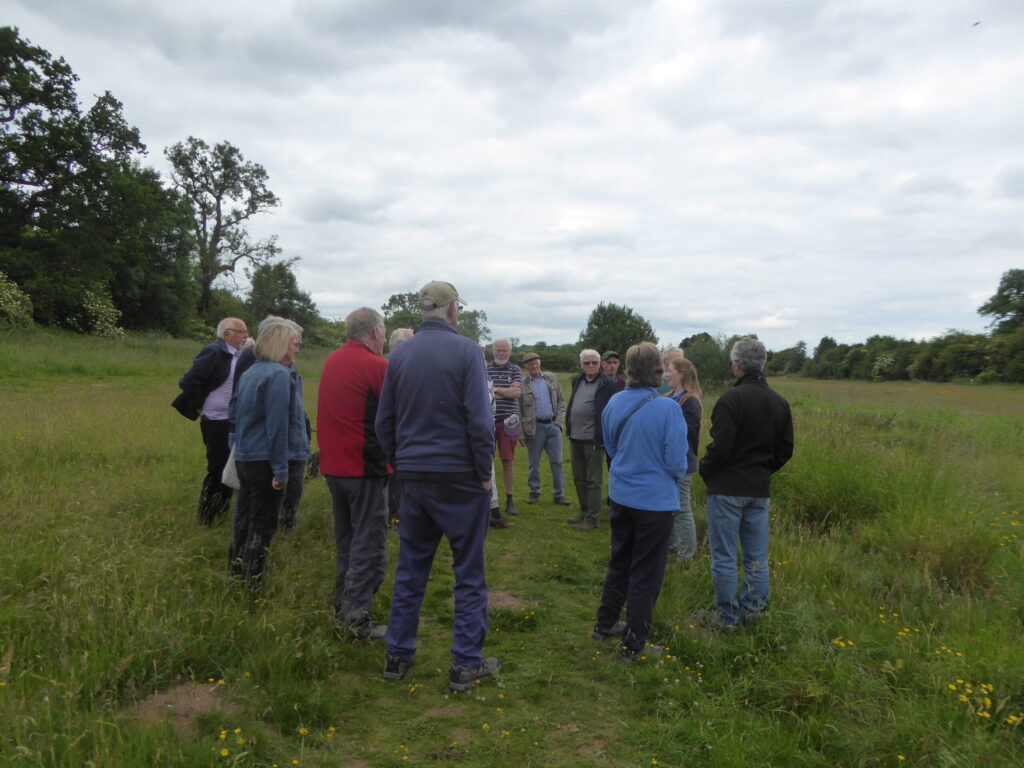
On Monday 13th June 2022 a group of eighteen CovSoc members had a tour of part of the Coundon Wedge, courtesy of Warwickshire Wildlife Trust (WWT).
Our visit was guided by Charlotte Ridpath, WWT’s Development Officer – Cultural Heritage and Community Engagement for the Sherbourne Valley Project.
The Sherbourne Valley Project aims to reconnect the people of Coventry with the city’s river and restore the river for wildlife.
The project has been made possible by a National Lottery Heritage Fund grant of £253,600 to help develop a larger, more extensive project. The Coventry Society was a supporter of this funding application.
Final plans have now been submitted for a grant of £1.8 million towards a £3 million four-year project focused on the whole length of the River Sherbourne in Coventry.
Working with WWT, project partners include Coventry City Council, the Environment Agency, Severn Trent, Citizen Housing, Coventry Diocese and Historic Coventry Trust.
Charlotte told us about the history and importance of the River Sherbourne to the city. It was the focus for its original creation and over time has including 14 mills over its nine-mile length. It was also important in the development of the city’s historical industries including tanning and dyeing.
We were shown what was described as a planned Stage Zero restoration scheme. The plan is to restore the North brook to its original course. In previous centuries the brook had been moved, possibly due to mill works or as part of the enclosures. The plan is to re-divert it back to its original course, which can still be seen as a damp patch at the bottom of the valley.

Charlotte also told us about work proposed to make Lake View Park more accessible by clearing undergrowth and improving paths.
Charlotte explained that across the country Wildlife Trusts are developing a new strategy for the future. The Wildlife Trusts have three new goals:
- To put nature in recovery by making more space for it, connecting habitats on a large scale, restoring the abundance of nature and enabling ecosystems to function again
- To inspire one in four people to take action for nature by working with communities, especially young people, to rewild their neighbourhoods
- To enable nature to help humanity so that wild places store carbon, prevent flooding, reduce soil erosion, aid pollinators and support people’s wellbeing.
For the Sherbourne project this means that local communities will be at the heart of re-wilding the river.

